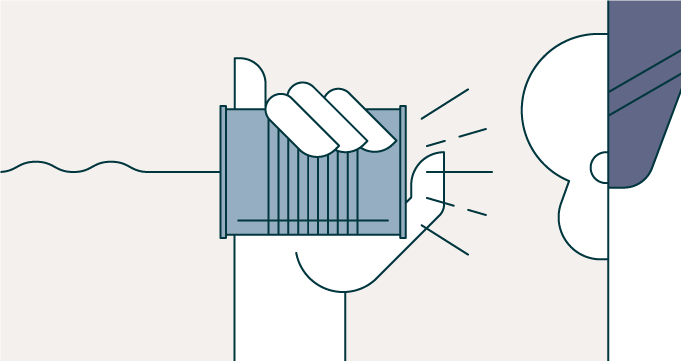
There’s no question that collectingcustomer feedbackfrom support tickets, churn and NPS surveys, and other sources can help your company identify problem areas in customer service or your products. Simply collecting responses isn’t enough: sharing customer feedback properly is required for your company to make truly informed decisions.
Break down those silos
Sharing customer feedback widely in your company should be a top priority, since teams often get to view just part of the picture (especially those that don’t interact directly with customers). For example, are yourcustomer successemployees aware of the feedback that sales, marketing, and account management teams have been receiving from your customers? By sharing customer feedback in structured quarterly reports, you will help your company gain a unified sense ofwhat brings satisfaction to your customers.这可能影响到产品负责人优先specific features and how your agents craft their responses to your customers.
Once you’ve established this report cadence, be sure to organize the feedback into two parts: first, a top-level overview of feature requests and pain points, and then a deeper dive into the customer feedback sources themselves: sales, account management, support tickets, and marketing surveys. Organizing it this way provides a quick, holistic view that stakeholders want while breaking down feedback data in a manner that supports arguments for change. For example, if your product team has resisted prioritizing a feature request because they’ve only seen it come from churn surveys, providing identical requests from other customer feedback sources can help change their perspectives (and eventually improve the roadmap).
Assign a point person
One effective way to ensure that customer feedback is shared widely in your company is to have the customer success team assign a point person for each product team. That employee will serve as a conduit for feedback, whether it’s prioritizing bugs, testing and learning about new features,crafting help center articles, or updating an internal knowledge base.In some companies, the customer success point person might even sit in on sprint planning meetings, but they should at the very least meet with the product owner on a regular basis to discuss feedback (say, after each sprint).
That point person’s role as a conduit is very real—they should collect insights and feedback from customers about when features need to be improved. Once they’ve organized the customer feedback, they can pass it off to the product team. However, it works both ways: that employee should also keep the customer service team informed about new features being developed.
The key to keeping your customers happy isn’t just about resolving support tickets—you need to listen carefully and ensure that everyone in your organization has heard the feedback, too.

How to hear the voice of the customer
Want more? Read our in-depth article about collecting and using customer feedback.
How to hear the voice of the customer
Want more? Read our in-depth article about collecting and using customer feedback.
Get started




